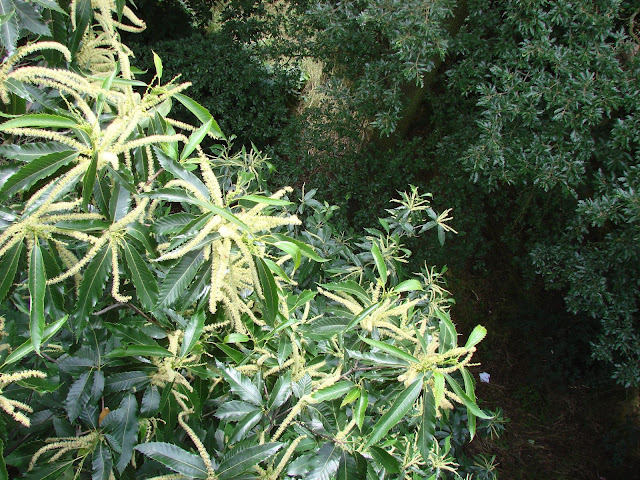On Tuesday afternoon I went for a walk in St. James's Park. I am very lucky because it is quite near to where I live, but I don't go there as often as I would like because there are lots of parks in London and I want to visit them all. Also, there are plenty of other places with wildlife that are nearby, so sometimes it is very difficult to make a decision.
This time I did not have much time to spare, so the decision was made for me - the nearest one. I walked round the lake and, in one of the area's where people feed bread and other unsuitable food to the ducks, swans and other waterbirds, I saw a duck that I did not recognise and had never seen before. Several people near me were trying to work out what it was. I took some photographs, even though the light was not great, and downloaded them onto the computer when I got home.
Then I spent ages leafing through a pile of bird books, trying to spot it in a photograph or drawing - to no avail.
After a while, I googled "duck with brown and white head" and the internet quickly came up with the answer. It was a White-cheeked Pintail. Of course, silly me, I should have known that! It is normally found in the Caribbean, South America and the Galapagos Islands and occurs on waters with some salinity, such as brackish lakes, estuaries and mangrove swamps. I am not surprised I had never seen one before. What it was doing in a London park is beyond me and I guess it must have escaped some some wildfowl collection.
In the photograph below, it is standing at the edge of lake while having a drink.
In between drinking, it preened it's feathers.
I thought it was a very pretty-looking duck.
For anybody, like me, who has never seen a White-cheeked Pintail before, I got the following information about it from the internet:
"The White-cheeked Pintail (Anas bahamensis), also known as the Bahama Pintail or summer duck, is a species of dabbling duck. It is a small, attractive duck with a pointed tail and is readily identified by the pure white cheeks for which it is named. The white extends onto the throat and upper part of the neck, and contrasts with the mottled brown crown and the bright red base to the otherwise dark beak. The rest of the body is a warm reddish-brown, spotted black, and is darker on the back, with reddish-buff edges to the feathers. The tail is whitish or buff, and there is a bright green, iridescent patch (the "speculum"), bordered in cinnamon-buff, on the wing.
It is popular in wildfowl collections and escapees are frequently seen in semi-wild condition in Europe.
The White-cheeked Pintail forages by head-dipping, upending and diving in shallow water, feeding
on mainly plant material such as grasses and the seeds, buds, leaves and stems of aquatic plants, but also sometimes takes in animal matter such as aquatic invertebrates."
If it has escaped from a wildfowl collection, I certainly hope it manages to look after itself in the park or, if not, that is can be caught and returned to wherever it used to live.

























































